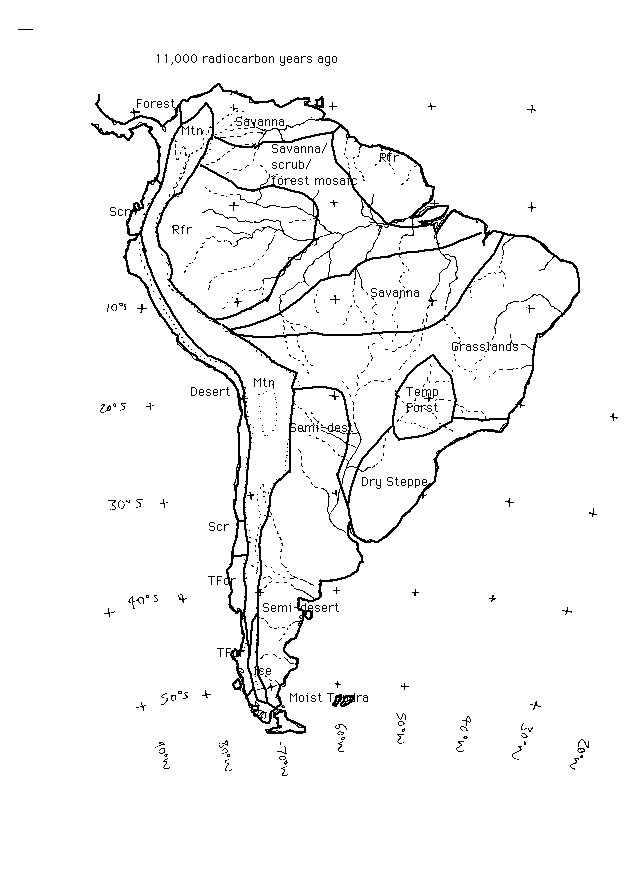I will admit that the examples I used were fauna not really comparable to horses. I used such diverse taxa to show that there would be many different strategies and opportunities for survival that the horse may stumble upon in an ATL.The main problem I see here is how horses would reach South America from North America without changing in the process.
North American horses were animals adapted to the grand prairies and open grasslands. They were not woodland animals, so they would never venture south of Central Mexico. It can't be compared to South American camelids, because they evolved from minor camelid forms that roamed the forests (North American camels were a different branch that vanished as well as horses) but once they reached South America, they adapted to the new habitat and changed again. And the same goes for other South American ungulates. Only the mammals which could adapt to different habitats including jungle can spread through both Americas, but not those not adapted to woodland. That's why South American camels did not recolonize North America, for example.
I mean that it is posible that an equid would reach South America, but would be a different species that would later evolve in a different form. It could resemble back to a horse in some way, but it would never be a true horse.
I would say that the ability for a species to spread geographically isn't entirely dependent on adapting completely to a different habitat. The distribution of vegetation has fluctuated over the course of thousands of years, the wet periods of the Sahara being an extreme example. The horse (or any open habitat species) did not need to become a tiny rainforest creature to reach South America. The time periods characterized by more aridity would spread open habitats favorable to horses and they would simply make their home in the newly opened landscape.

Here is a vegetation map of South America 11,000 years ago. The savanna/scrub/forest mosaic would be easy enough for a surviving horse population to penetrate. No need to struggle in the jungle when it moves out of your way. The horse already inhabited as far south as Bolivia on its own either way.
Is your point that the horse would change so much from it's time in South America that it would prove impossible to domesticate? I hope I'm not misunderstanding your concerns.
This is why I mentioned the DNA study that shows that the South American Equids could infact be Equus ferus caballus, the same species as the domestic horse. I'm not hostile to the idea of the horse not being domesticated and hunted only, which is why I said they could be analogous to the bison in North America near the end of my first post. Whatever the inhabitants do with the horse or the predators that may follow them, I'm open to seeing how they develop regardless.Understand the horse can be used for milk, meat, hide, as well as transportation. The thing is you are assuming the peoples of the Pampas do not treat them like zebras. The fact that an animal exists and is domesticated else where does not necessarily mean that they will be domesticated. People have farmed bison in the US and reindeer in Europe, but they have not succeeded with caribou in North America and wisent in Europe. The aurochs did not go extinct because people tamed them all. The przewalski horse has never been tamed there is no reason why hunter-gatherers with no real means of capturing these animals.
Also there would be competition from the native predators there, not just pumas and jaguars, with what you are suggesting other predators might survive. The horse is a large animal that is a lot of meat for a predatory animal that can catch it.
Last edited: